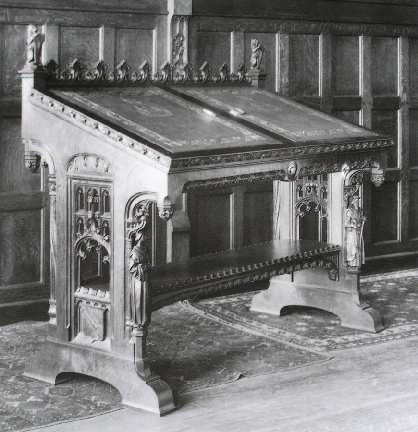
THE WILLIAM HARRISON SHAKESPEARE FOLIO CABINET
The elaborate cabinet was built to be a fireproof, lighted safe so it was lined with brass, glass, and steel, which made it heavy and expensive; so expensive in fact that, as inconceivable as it seems for a man as rich as Harrison, it may never have been delivered. Copies of Price Mclanahan business correspondence document a controversy over costs among Harrison, Trumbauer, and Price leading Price to defend his work by sending Trumbauer the opinion of tastemaker, architect, and University of Pennsylvania professor Warren P. Laird who pronounced the cabinet to be “the finest piece of furniture ever made in this country.”
Harrison’s house, “Grey Towers” was furnished primarily with reproduction French furniture, and there is nothing comparable to this cabinet listed on the inventory taken at the time of Harrison’s death. Harrison maintained offices in Philadelphia and had a house built for his mistress, so, if he took delivery of the cabinet, it might have been kept in one of these locations. The Shakespeare folio was given to the Rosenbach Museum and Library, where it remains today without Price’s case. Harrison’s only son and heir died in Palm Beach, Florida. Such an impressive piece most likely still exists, but like many Price-designed Rose Valley pieces, it is no longer recognized for what it is.
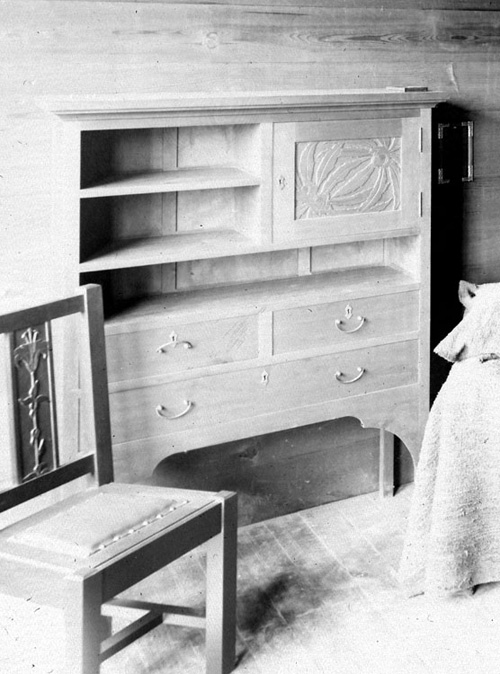
BYRDCLIFFE CHESTNUT CABINET
Panels designed by Zulma Steele
Period photographs show now-lost pieces of furniture made at the Byrdcliffe Arts and Crafts Colony in Woodstock, New York. Among them was this bookcase with a chestnut panel designed by Zulma Steele set in the door. There were several other pieces of furniture in the “chestnut suite.” The chiffonier with a chestnut drop front in the photograph below is now in the Milwaukee Museum of Art. The iris desk is now back at White Pines. Lily chairs like the one shown are now in several museums including Milwaukee and the tulip poplar linen press is now at the Museum of Fine Arts, Boston.
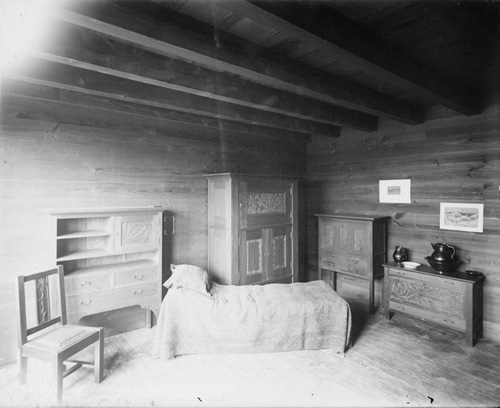
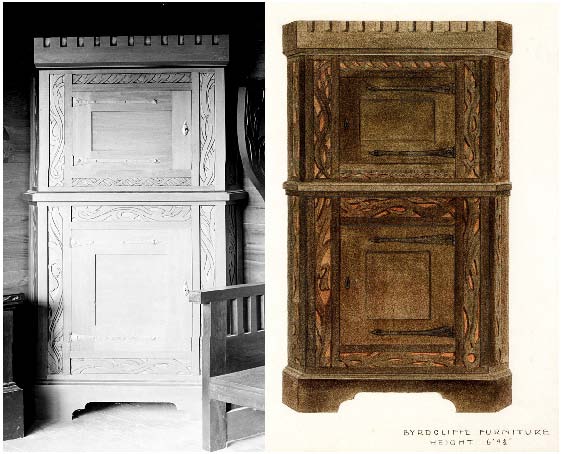
BYRDCLIFFE CORNER CABINET
Dawson Dawson-Watson

Kreigh T. (Taylor) Collins majored in art at Cincinnati (Ohio) High School. He also studied art in Cleveland (1924-1925), and in 1925 opened his own studio. He met Theresa VanderLaan, whom he married in 1929 after a year spent studying in Paris (with visits to North Africa). She became the model for characters in “Up Anchor” and “Kevin the Bold,” as well as model for many of his sketches and paintings. They moved to Chicago in 1929, where he made illustrations for an advertising agency. In the fall of 1930 the Collins family moved to Grand Rapids, Michigan, where he again took up advertising illustration. In 1931, he and Theresa returned to Paris where he studied and first began to concentrate on landscape painting.
They returned to the United States in the midst of the Depression, but Collins did well by selling landscapes he painted while living in the small village of Leland, Michigan. He also contracted with a newspaper syndicate to illustrate the “Do You Know” series by Willis Atwell for the Michigan Centennial. He painted portraits in Ohio, eight murals in Dallas, Texas, and landscapes in Taos, New Mexico. All this work caught up with him and by 1937 he could no longer use his right arm to paint. He discovered that he could make line drawings by resting his elbow on the arm rest of a chair with his forearm on a drawing board. The Methodist Publishing House, which had until then bought only a few of his travel sketches, started sending him large quantities of work. He also illustrated the Informative Classroom “Teaching Pictures.” In 1941 he found he could do a small amount of painting again without pain and it was then that he must have worked on book illutrations for the John C. Winston Company of Philadelphia.
In 1948 Collins syndicated a comic strip titled “Mitzi McCoy.” The strip was a great success, and in 1950 “Kevin The Bold” was launched. “Kevin” was equally successful, and had a long run. Then in 1968 Collins started a new type of comic strip “Up Anchor” which was a departure from either the adventure or the slapstick styles then in vogue. The new strip followed the daily lives of a family on a sailboat. This strip proved to be a success, and continued until Collins’ retirement in 1973. Collins died on January 8, 1974.
His wife gave many of his papers and much of his art work to the Grand Rapids Public Library where it is still being catalogued. But much of his illustration work needs research because there is no comprehensive list of the books he worked on. The illustrations shown below were apparently used in a book or books published by John C. Winston at about the same time (1942) as they published The Lone Woodsman. One series seems to be about the adventures of two American boys on a South Pacific island while the other seems to document Pre-Columbian culture in South America. Any information leading to identifying the book titles would be appreciated.

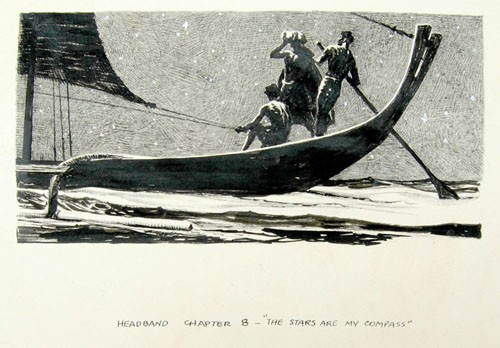
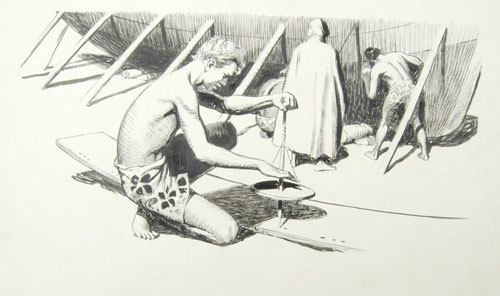
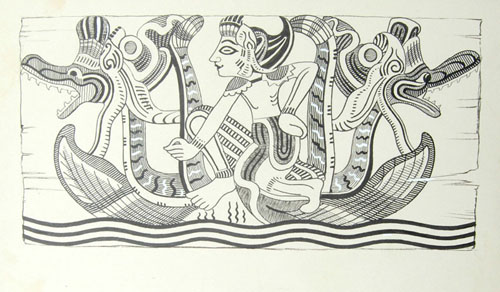
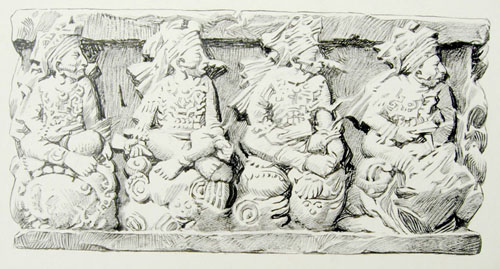

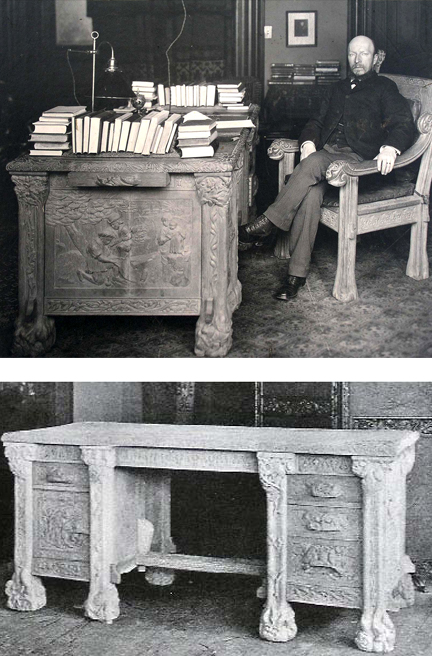
DR. FELIX ADLER'S DESK AND CHAIR
Karl von Rydingsvard
Karl von Rydingsvard learned woodcarving in Europe, but he and his wife Ida spent their lives teaching in New England at the Massachusetts Normal Art School and The Rhode Island School of Design, among others. He ran a summer school in Brunswick, Maine where he built a house on the Albert Merrill property in nearby Pennellville. He died in Portland, Maine. von Rydingsvard carved this desk and chair for Felix Adler, the founder of the Ethical Society. The desk is known to have been at the Society’s offices in New York City until the 1960s when it and the chair were supposedly given to the Society’s school in Westchester.
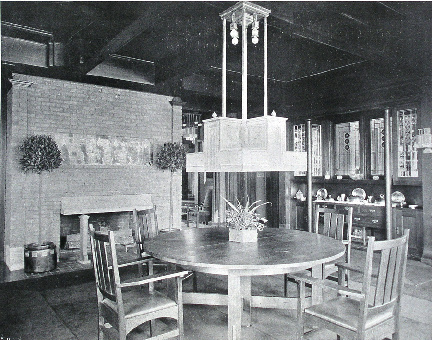
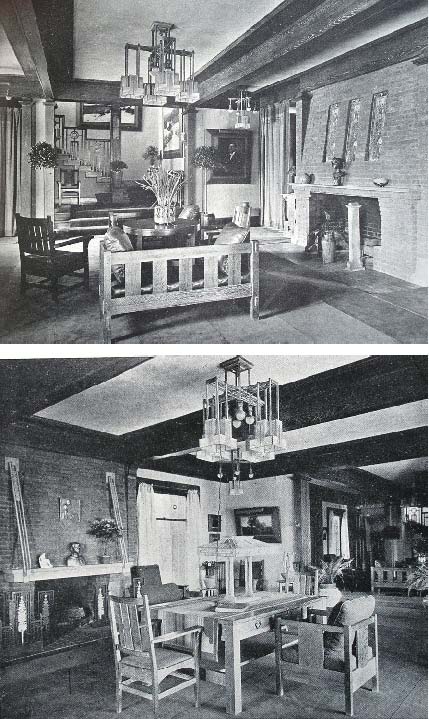
THE HARRY RUBENS HOUSE AT GLENCOE, ILLINOIS
George Washington Maher used the hollyhock as the primary decorative motif in the Harry Rubens House, which was built in Glencoe, Illinois. Maher did not design the movable furniture for this house as he did for the now more famous King House called “Rockledge.” However, period photographs of house show Maher-designed lighting fixtures, mosaics, stained-glass windows, and andirons that were quite likely salvaged.